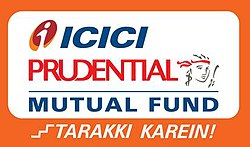Mid Cap Mutual Funds

1Y
3Y
5Y
SI
Nav
Risk

1Y
3Y
5Y
SI
Nav
Risk

1Y
3Y
5Y
SI
Nav
Risk

1Y
SI
Nav
Risk

1Y
3Y
SI
Nav
Risk

1Y
3Y
5Y
SI
Nav
Risk

1Y
3Y
5Y
SI
Nav
Risk

1Y
SI
Nav
Risk

1Y
3Y
5Y
SI
Nav
Risk

1Y
3Y
5Y
SI
Nav
Risk
Mid-cap mutual funds are equity-oriented investment schemes that focus primarily on mid-sized companies. According to SEBI guidelines, these funds must invest at least 65% of their total assets in mid-cap stocks, which are companies ranked from 101st to 250th by full market capitalization.
These companies are usually in a phase of rapid expansion, having already proven their business models but still offering significant growth potential. Mid-cap funds aim to capture this upside by investing in such companies before they grow into large-cap giants.
Why Mid-Cap Funds Are Trending in 2025
The Indian stock market maintained a positive streak through 2025, with mid-cap indices outperforming large-cap indices in terms of returns. The Nifty Midcap 150 Index, for instance, has surged by more than 28% year-to-date as of June 2025. This rally came from substantial profits in mid-sized firms. There was also increased interest from retail investors, along with favorable conditions in manufacturing, capital goods, and infrastructure.
In this market, mid-cap funds have been outperforming the market and taking the lead. Funds like Kotak Emerging Equity and Axis Midcap have been at the top, delivering a CAGR of 23%–29% during the five years. Some funds, like Motilal Oswal Midcap Fund and HDFC Mid-Cap Opportunities Fund, have performed well over the long term.
Key Features of Mid-Cap Funds
- Higher Growth Potential: Mid-cap companies typically operate in sectors that specialize in specific areas or are at the forefront of creating technological innovations. They usually grow earnings faster than established large caps, especially during good economic times, making mid-cap funds capable of delivering higher returns.
- Elevated Risk Profile: These funds are more volatile than large-cap funds. Mid-cap stocks react strongly to market corrections and slow economies. They often struggle with liquidity during downturns, making them suitable for investors who can tolerate short-term fluctuations.
- Sector Diversification: Mid-cap funds typically have exposure across various sectors, including chemicals, auto ancillaries, capital goods, pharmaceuticals, defense, and consumer durables. Fund managers dynamically adjust sector weights in response to market opportunities.
Benefits of Mid-Cap Mutual Funds
- Superior long-term returns: Historically, mid-cap funds have outperformed large caps over 7–10 year periods, thanks to the rapid expansion phase of their underlying companies.
- Ideal for SIP investments: Systematic Investment Plans (SIPs) in mid-cap funds help average out market volatility and build long-term wealth.
- Diversification: They add a valuable layer of diversification to a portfolio that may be heavily tilted toward large caps or fixed-income instruments.
Risks to Consider
Their volatility can be sharp during market corrections or macroeconomic disruptions. Also, because many mid-sized companies have limited liquidity, exiting positions during a downturn can be challenging for fund managers.
Over-concentration in specific themes or sectors could also adversely impact returns. These risks make mid-cap funds less suitable for conservative or short-term investors.
Investment Horizon
Investors who want to get the most from mid-cap funds should hold them for at least five to seven years. A long period helps investors stay focused during market ups and downs. This way, the compounding effect can work well. They should regularly check the fund's performance and stay calm during market drops.
Performance Highlights
As of June 2025, many top-rated mid-cap funds have shown strong multi-year performance. For example:
- The Kotak Emerging Equity Fund has delivered a CAGR of around 26% to 29% over the past five years.
- Axis Midcap Fund has shown returns in the 23% to 26% range.
- Motilal Oswal Midcap Fund has consistently returned above 25% annually over the same period.
- SIP investments in these funds over the past decade have compounded significantly, with ₹10,000 monthly SIPs growing to over ₹33 lakh in some cases.
Taxation of Mid-Cap Mutual Funds
- Short-term capital gains (STCG): If the units are redeemed within one year, the gains are taxed at a rate of 15%.
- Long-term capital gains (LTCG): For units held for more than one year, gains above ₹1 lakh in a financial year are taxed at 10%.
- Dividends: Taxed as per the investor's income tax slab, and a TDS of 10% is applicable if dividends exceed ₹5,000 in a financial year.
Who Should Invest?
Mid-cap funds are ideal for:
- Young professionals and long-term investors who can handle some volatility.
- Aggressive investors seek higher returns over time.
- SIP investors with 5 to 10-year goals such as buying a house, building a retirement corpus, or funding children's education.
- Diversification seekers looking to complement their large-cap or debt fund holdings.
These funds are not recommended for individuals who require capital preservation, are nearing retirement, or cannot withstand short-term market fluctuations.
Get In Touch
Interested in exploring more about JezzMoney Mutual Fund Distributors Software? Submit the form, and we will respond quickly.
Get Expert Advice on Investment in Mutual Funds!
- Certified mutual fund distributors around India will reach out to help you build your future.
- Connect with trusted mutual fund distributors and find them from your city and pincode area.
- JezzMoney is only the mediator to help you connect with these certified professionals.
- It is your obligation to gather accurate information when you receive contact from our platform.